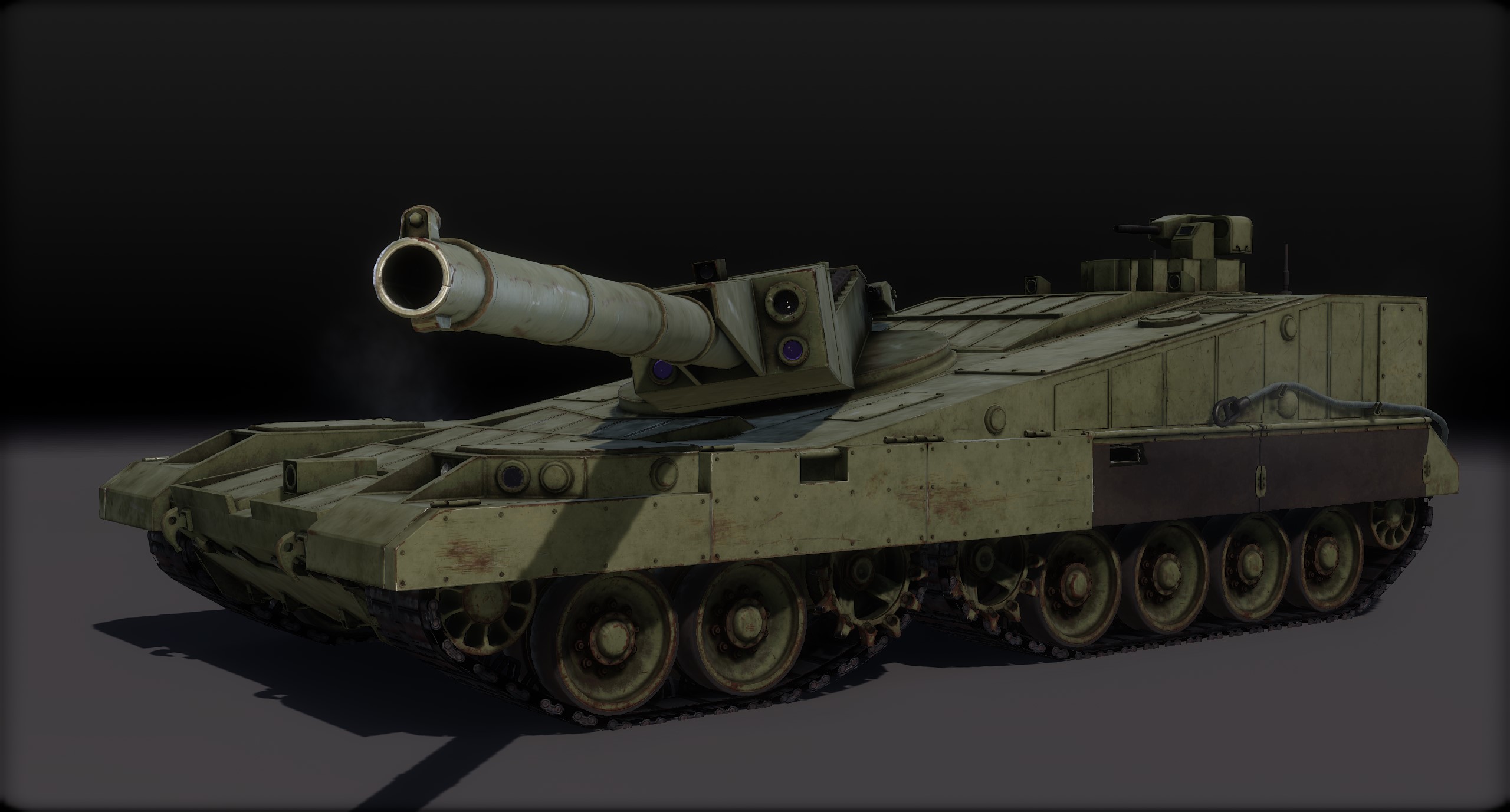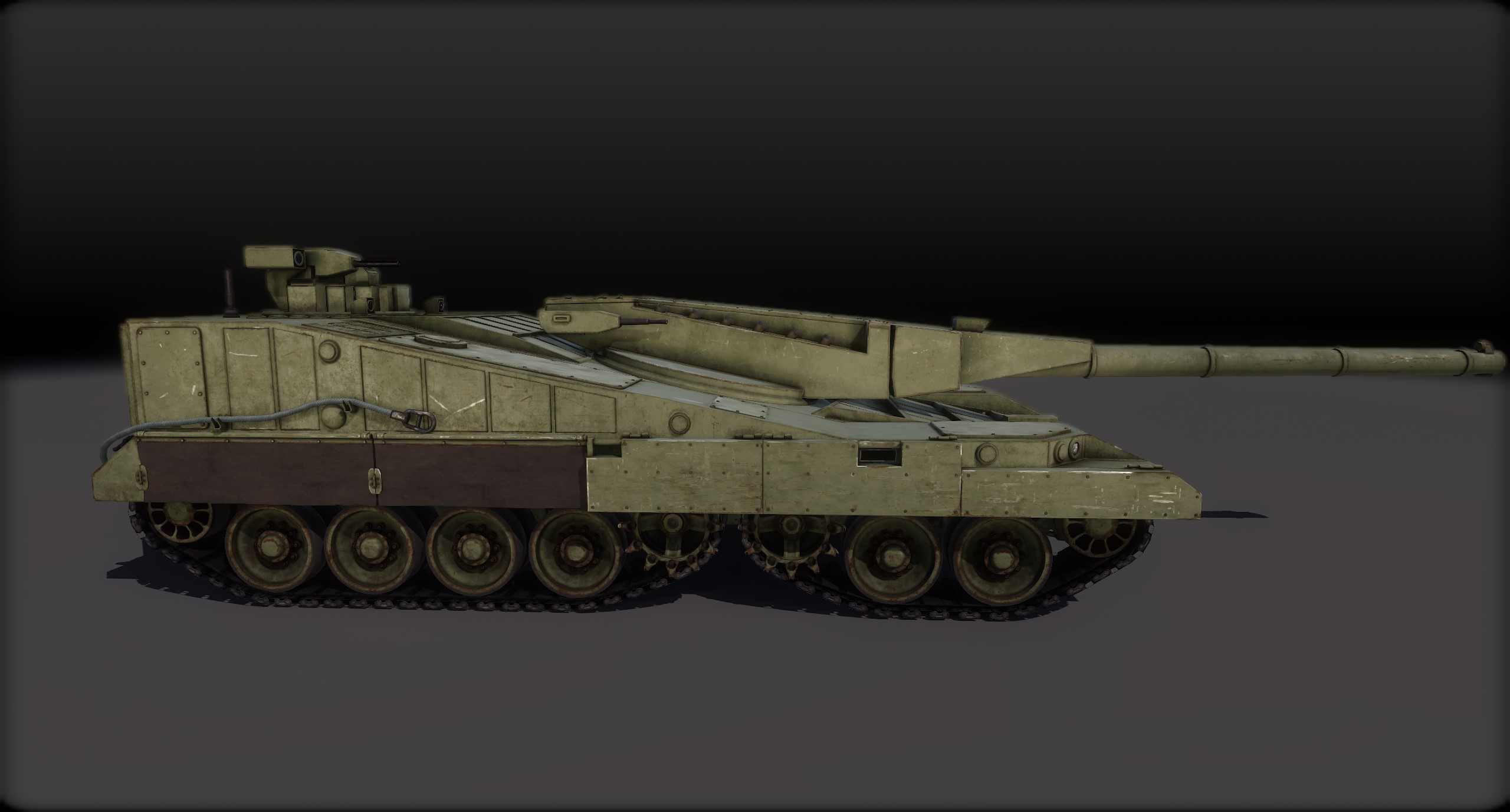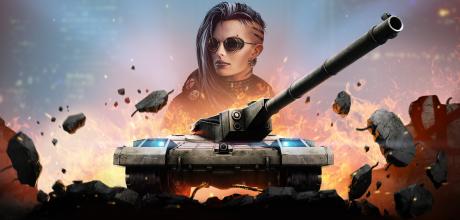
Commanders!
Today, we’d like to introduce to you the top prize of the upcoming Battle Path campaign called “Age of Rage”. In the upcoming campaign, many things will be different compared to the Warlords of the Wasteland one – and that includes its main goal, one of the most unusual tanks ever designed – the Object 490.

Object 490, photo by btvt.info
Even though it looks like it belongs to the realms of sci-fi rather than real world, this tank was not born in the mind of a novelist – it was the result of seeking alternative ways to protect vehicle crews in the world of 1980s when shell penetration (especially when it came to depleted Uranium rods) was rapidly surpassing the protective abilities of even the best variants of Soviet service tanks.
Another issue was, of course, the protection of the NATO tanks. Just like their western counterparts, the Soviet developers were aware (either by espionage or from intentional leaks and releases) of various American programs such as the attempts to build an Abrams tank with a low-profile turret. As a result, in 1984, a panel meeting took place in Kharkov to determine what guns should the future tanks carry. The standard Soviet tank caliber of the time was, of course, 125mm (as it is now), but many believed it wasn’t enough and multiple variants were considered (including 130mm, 140mm or 152mm). It was there that General Litvinenko, the head of research for GRAU (Soviet artillery and rocket directorate) convinced the others that the 152mm caliber would be the best way to move forward and that’s what was ultimately decided to use for the future.
But, of course, it wasn’t as simple as a gun swap. Implementing such a massive caliber into the vehicles that were available was not a good solution. It was technically possible – the Object 292 MBT was, for example, a T-80 with a 152mm gun installed in a modified turret – but such designs were rarely practical since installing the cannon left little room for everything else.
Luckily for the Soviets, they had a bunch of next-generation tanks in development and those could be adapted – to a degree anyway (that’s how the Object 490A Buntar was developed into the Object 477 Bokser, for example).
There was, however, a third way – to develop the ultimate chassis for such a massive gun with the abovementioned maximum crew protection in mind. And that’s exactly what this was – one of the last Soviet era super-tank projects and the ultimate embodiment of tank innovation.
This Object 490 was one of several variants carrying the designation and was developed in Kharkov specifically to carry the 152mm 2A73 smoothbore cannon. As tank designs went, its properties were pretty much without equal.

Object 490, photo by btvt.info
The tank had a crew of two men, both sitting in the rear section of the vehicle in a heavily armored capsule. They were protected not only by the entire mass of the tank in front of them, but also by its unconventional gap-based armor with heavy sloping. The hull was one unit – despite the track appearance, it didn’t consist of two separate blocks. Inside, however, it was divided into several compartments – from front to rear:
- Fuel tanks in the nose of the vehicle
- Engine compartment under the turret
- Remote-controlled unmanned turret above the engine compartment featuring the gun and its support systems (optics, FCS)
- Ammo rack and automatic loading mechanism (a rather large compartment starting right behind the turret ring)
- Crew compartment in the rear with two men controlling the tank
These compartments were also separated by 20mm thick steel plates.
The upper front plate covered effectively the entire upper part of the vehicle. It consisted of composite armor covered by a layer of unique Gofr system ERA blocks. The main advantage of these blocks was their smaller size while staying as effective as the late Kontakt series, which reduced the size of unprotected ares when one of them was detonated and made them more practical overall. These blocks were, however, an integral part of the tank’s composite armor and could not be removed at will.
This combination provided unprecedented levels of crew protection – for the frontal hull (the upper frontal plate), it reached from between 2000mm of RHAe to incredible 4500mm of RHAe. The unmanned turret was, of course, protected less, as it itself acted as a protection element for the men inside.

Object 490, internal layout
Here it’s important to emphasize the difference between crew protection and the thickness of the armor itself. While the crew protection was extreme, this was because the shells had to literally pass the entire tank to get to it. The nose with the fuel compartment, however, was less armored (around 700mm to 1000mm equivalent depending on shell type used). In fact, this level of protection was the lowest admissible one (anything less and the tank wouldn’t pass official military requirements). This was not a problem for two reasons:
- The abovementioned steel plates between each compartment were in place
- The fuel tank compartment was also compartmentalized into several parts
What this meant was that even if the tank was hit into this most exposed area and, even if its armor got penetrated, only one fuel tank compartment would be damaged. Such hits would not knock the tank out.
The bottom of the tank had different thicknesses as well, ranging from 20mm in the front to 100mm under the crew compartment. This solution allowed for keeping the weight of the tank low – around 54 tons in total.
But that was still not everything when it came to protection – the tank boasted top-of-the-line hard-kill experimental APS called “Shtandart” with its 26 mortar barrels located around the vehicle to cover most of the angles. There was a Tucha smoke grenade launcher set with 12 barrels.
As was written above, the Object 490 was armed with a 152mm 2A73 automatically loaded smoothbore cannon that was fed from a compartment located in the hull behind the turret. The compartment was quite long, which allowed the gun to actually use 1400mm long unitary shells (APFSDS and HE).

The advantage of unitary shells was that the automatic loading mechanism could be simpler than a traditional Soviet-style carousel for the T-series, significantly improving the speed of the loading process. Additionally, the ammo compartment was equipped with blow-out panels so the crew would survive even an ammunition detonation. It’s worth noting that several variants of this compartment were developed and the final one (with the shells staying in horizontal position) consisted of two conveyor-type systems and allowed the tank to carry 32 rounds.
The gun could elevate to +10 degrees and depress to -5 degrees. Additionally, due to the way the gun was mounted, they were valid only when it was facing forward (or up to 45 degrees from the vehicle’s axis). These values don’t seem like much – at least until one realizes the tank had another ace up its sleeve, its hydraulic suspension that allowed it to change the tilt of its hull in order to provide the gun with better aiming abilities. Still, even with that advantage, one can clearly see that the gun cannot realistically fire backwards, which is a significant flaw of the design. The rear of the vehicle was protected by another small remote-controlled turret with a 30mm grenade launcher and two 7.62mm machineguns.
The tank was powered by two ZiM 4TD engines with the total output of up to 2000hp (the engines could work in low-consumption 800hp mode or in combat 1000hp mode), allowing the tank to go as fast as 80-90 km/h thanks to its excellent power-to weight ratio. Here’s where the two-part suspension played a major role – those engines were not located in parallel – instead, one engine was in the frontal part of the vehicle and was powering the front half of the suspension while the second engine was behind it and was powering the rear half.
Interestingly enough, when not in combat (in columns, for example), the tank was supposed to drive in reverse. The driver had a rear-facing periscope and IR set and could simply turn his chair to face rearward and drive that way. This improved his ability to control this unusual vehicle in a major way. The maximum reverse speed was the same as the maximum forward speed thanks to the way its transmission worked. When driving forward, the driver had to rely completely on the forward-mounted cameras.
In summary, the Soviets came up with a vehicle that:
- Was practically impossible to knock out from the front
- Had hydro-pneumatic adjustable suspension
- Was armed with a massive automatically loaded gun that could take out anything the NATO could field
The use of experimental technologies, however, meant that it was clear to everyone involved this tank would never see active service. While advanced, it was clearly too expensive for any mass-production. The photos that were discovered relatively recently belong to a full-scale wooden mock-up from the late 1980s or the early 1990s, which is as far as the tank got. With Ukraine split from the Soviet Union and running into economic troubles of its own, there was simply no funding for such fantastic endeavors and the project passed into history along with the other late Soviet era next generation tanks that were supposed to lead the Red Army into the 21st century.

In Armored Warfare, the Object 490 will be a Tier 10 Premium Main Battle Tank and, as its unique shape suggests, one of the most distinctive vehicles in the game.
Let’s start with the armor. It will be extreme – and we don’t use that word lightly. The tank’s hull will be frontally impenetrable to anything but the most powerful of shells and missiles. Its basic protection levels will put the Challenger ATDU to shame with only the turret’s armor being thinner – but also protected by the unmanned turret damage reduction as well as its pool of 3200 hitpoints.
But that’s not all – the tank will feature an experimental Soviet hard-kill APS called Shtandart. This system will be on par with Armata’s Afganit with one exception – it will not be able to shoot down standard projectiles.
Even so, it will be very effective in combination with its armor and anyone hoping to defeat this behemoth will have to use their wits since flanking will most likely be the only way how to knock this monster out. But beware – even the flanks will be heavily armored and practically immune to autocannons and HE shells. And top-down missiles? Forget them – the roof protection will match that of the hull. This will be a very tough nut to crack.
But cracking it is not the only problem – it will be difficult to even slow it down. The tank has two sets of tracks on each side and to immobilize it, both sets on the same side have to be destroyed, which makes it extremely difficult to halt its advance from the front. And that’s if you manage to hit it at all since the Object 490A will also be fast. Very, very fast. It will have the same maximum forward and reverse speed – 90 km/h. That’s right – the tank will be able to run away from you if the worst faster than most AFVs can make thanks to its two 1000hp engines. And even if you manage to knock one of these engines out, the tank will still be running using just the second one!

And then there’s the firepower in the form of its 152mm 2A73 smoothbore gun. This gun will have roughly the same properties as the one the Armata 152 uses – it will fire the same 850mm penetration APFSDS shells with slightly lower reload and aiming times. And last but not least, the vehicle’s very poor gun elevation and depression values will be compensated by the ability to use its hydraulic suspension much like the Altay does. This suspension will also allow it to go into the “crouch” mode, increasing its camouflage factor and aiming time at the expense of mobility and viewrange. Activating this mode will also cover the vehicle’s largest weakspot – the lower frontal plate.
There will, however, be some downsides to the vehicle as well. For starters, the tank will feature very poor hull traverse. It will be fast but its ability to steer will be severely limited, making careful positioning choices a must. In other words, once flanked, the vehicle will have very few options as to what to do. In fact, they will be mostly limited to moving forward or to retreating rapidly. Another major downside will be the fact that it will not be possible to aim to the sides and rear properly. The turret traverse angles will be limited to 45 degrees from the vehicle’s axis. Once attacked from behind, the tank will be defenseless. And, finally, its view range will generally be very poor to begin with even without the active ability.
This tank will be suitable for players who prefer acting as a spearhead for their team, leading the charge. Its excellent armor will protect them against incoming fire, but, at the same time, the tank will require you to be mindful of your surroundings – expose yourselves too much and you will end up being flanked by an enemy counterattack or a marauding pack of Light Tanks. But if there are allies to protect your sides, you will be all but unstoppable.
Obtaining this tank will be no small feat but do not worry – we’ve made many adjustments to the Battle Path mechanics in order to make it more convenient and fun. In the next issue of the In Development series, we’ll tell you more about the changes, but until then:
See you on the battlefield!








